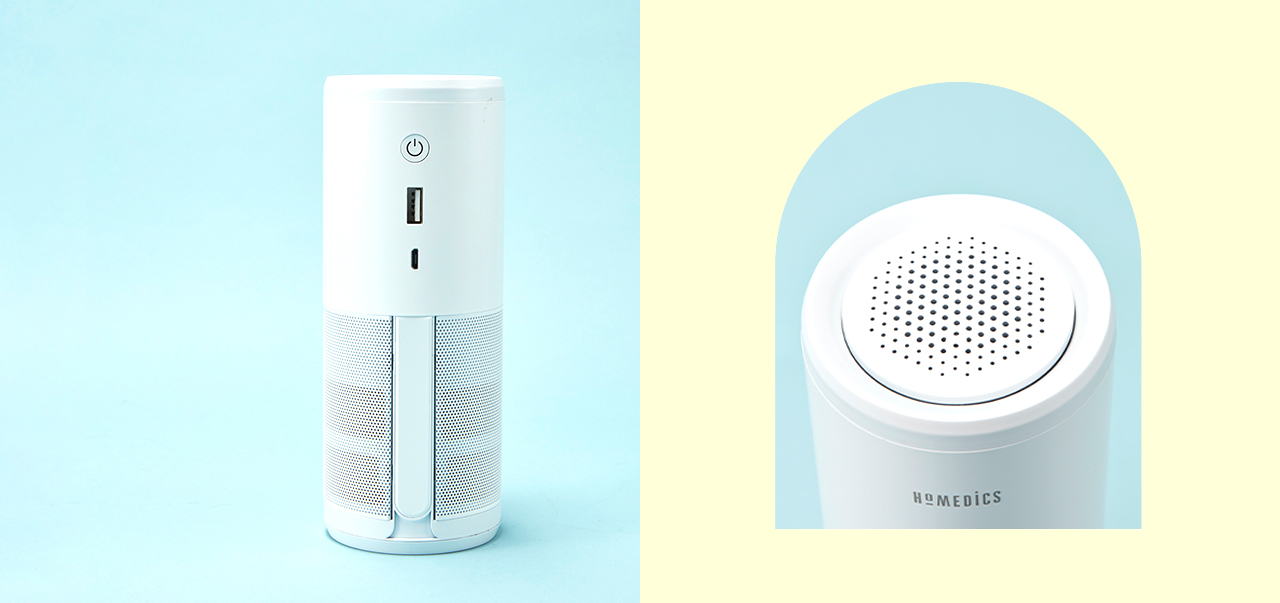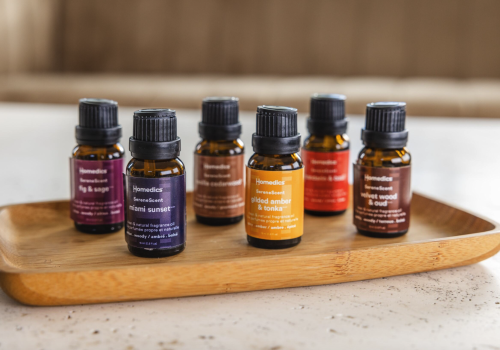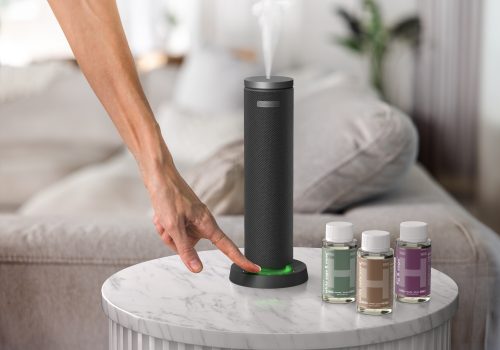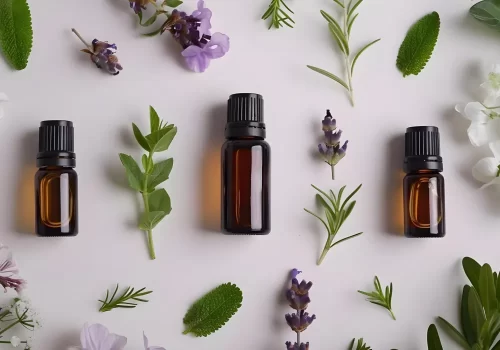What Does an Air Purifier Do & How Does It Work?
You might think pollution is mostly hanging in the air outside your home. But wind circulates the outside air and helps dissipate pollutants. Indoors, however, dirty air can hover in your home for much longer, possibly exposing you to toxins and allergens. Using an air purifier is a great way to capture airborne particles and remove harmful gases from inside your home. Find out what an air purifier does to improve indoor air quality and what you should look for when buying an air purifier for your home.
WHAT IS AN AIR PURIFIER?
An air purifier is an appliance that pulls in airborne particles from inside your home, filters it, and releases cleaner air back into the room. Portable air purifiers work in rooms of all sizes. In addition to simply filtering out large particles, air purifiers sanitize air that passes through them.
What Does an Air Purifier Do?
Air purifiers improve indoor air quality, limiting your exposure over time to harmful pollutants. When you take a deep breath, you want to fill your lungs with pure, fresh air—not dirty air filled with allergens and dust.
Air pollutants also include pesticides and gases emitted by mattresses and other furniture materials. Most indoor air pollution comes from sources that are also indoors, such as cooking fumes, fireplaces, coal heating, paints, and insecticides. Building materials, such as treated wood and wallpaper, can also emit pollutants through a process known as off-gassing.
Due to all of these potential sources of air pollution that exist right inside the home, air purifiers are especially important for people with underlying lung conditions, such as asthma.
Air pollutants aren’t the only things hanging around; bacteria and viruses also ride on airborne particles, sometimes for hours or days.
HOW DO AIR PURIFIERS WORK?
Most air purifiers use a fan to pull in air from the room and push it through one or more filters inside the device. Depending on the model, an air purifier could use filters made from paper, fiberglass, an activated carbon material, or a combination of materials to absorb pollutants and other particles from the air.
IMPORTANT AIR PURIFIER BENEFITS
According to the EPA, air pollutants can lead to headaches, dizziness, respiratory problems, heart disease, and cancer. Some indoor air pollutants, such as carbon monoxide and radon, are extremely dangerous, even from a short exposure.
A high-quality air purifier can remove many of these harmful pollutants from your indoor air. Filtering the air with an air purifier reduces the risk of experiencing many of the most common negative effects.
By capturing dust mites, allergens, and other particles, an air purifier can make it easier to breathe, especially for people trying to manage allergies or asthma. Filtering out allergens and particulates with an air purifier has been shown to reduce nasal symptoms and improve breathing for people with asthma.
In addition to removing irritating airborne particulates, air purifiers can also make the air feel fresher and cooler. These devices remove unpleasant odors by filtering out pet dander, removing odor-causing particles, and eliminating mold and mildew elements.
Finally, cleaning the air with an air purifier can improve your sleep. Research has shown that air filters may mitigate some of the allergic reactions that most often impact sleep.
Different Types of Air Purifiers
You might have already heard some of the following terms but when you’re choosing an air purifier, it’s important to know what they mean and how they differ. To better understand the capabilities of various air purifiers, let’s dig into some vocabulary.
●A high-efficiency particulate air (HEPA) filter is designed to capture up to 99.97% of particulates as small as 0.3 microns in diameter from air that passes through the filter.
●Activated carbon filtering uses an incredibly porous carbon substance that absorbs allergens and pollutants extremely effectively.
●An electrostatic precipitator charges air particles that pass through it, then traps them using plates that carry the opposite charge.
●An ionizing electronic air cleaner or ozone generator absorbs odors in the air.
●A UV light air purifier shines a powerful UV light onto a stream of forced air, reducing bacteria and viruses that are vulnerable to UV radiation.
WHAT SHOULD I LOOK FOR WHEN BUYING AN AIR PURIFIER?
●Size: Since portable air cleaners most often clean the air in a single room, these devices come in a range of sizes. An air purifier will list the room sizes with which it’s compatible. Look for an air filter that is capable of changing the air in a room that’s approximately the size of the one in which you intend to use it. You can also use the 2/3 rule below to determine the size you need using CADR ratings.
●Noise: If you plan to run your air purifier while you sleep, look for one that features quiet operation.
●Maintenance: With any air purifier, you’ll have to change the filters regularly. Beyond the upfront cost, consider the ongoing maintenance costs of things like replacement filters and cleaning.
●Asthma & Allergy Certification Mark: Given by the Asthma and Allergy Foundation of America, this label indicates that the air cleaner has passed the organization’s tests and has been proven to reduce allergen levels by capturing the particles and to meet the ozone standard set by the Code of Federal Regulations.
●Energy Star: Energy Star air purifiers are up to 40 percent more energy efficient than other models, reducing long-term usage costs.
Should I Look at HEPA or CADR Ratings?
HEPA and CADR rating systems use slightly different measurements to compare filters, but you can use either or both to evaluate products as you shop. However, make sure you compare like with like, pitting HEPA seal againstHEPA seal and CADR rating against CADR rating.
True HEPA signifies that the filter will catch particles as small as 0.3 microns. The clean air delivery rate (CADR) rating, meanwhile, measures the volume of air that an air purifier can clean per minute. In other words, CADR measures the speed of an air cleaner, while HEPA indicates that an air purifier can capture smaller particles.
The Association of Home Appliance Manufacturers (AHAM) seal, which you’ll find on an air filter’s packaging, lists specific CADR ratings for tobacco smoke, pollen, and dust. Better air purifiers have higher CADR ratings.
To estimate the size of the air purifier model you’ll need, use the 2/3 rule: look for a tobacco smoke CADR rating that’s at least 2/3 the area of your room in square feet.
Minimum efficiency reporting values (MERV) measure the effectiveness of an air filter at trapping larger particles. You can compare filters by looking at their MERV ratings, where a higher rating signals better filtration.
The most comprehensive air purifiers include True HEPA filters, a high CADR rating, activated carbon filtering, and a UV light source to reduce viruses.
WHAT ARE SOME OTHER WAYS I CAN IMPROVE MY HOME’S AIR QUALITY?
Purchasing an air purifier is a great way to improve the air quality in your home, but there are other steps you can take to breathe cleaner air, too.
Upgrading the filters in your home’s heating, ventilation,and air conditioning (HVAC) systems can make a significant improvement in your whole home’s air quality. Just like in a portable air purifier, you should change HVAC air filters 1 to 2 times per year.
Improving air circulation is one of the most important steps you can take toward achieving cleaner, more fresh air throughout your home. When the weather is nice, open some windows and let the outdoor air refresh your home. Use ceiling fans often. If it’s too cold in the winter, change their direction to clockwise and set them on low to create an updraft that better circulates warm air from your heaters.
Good ventilation is another key to better air quality. Cooking releases gaseous pollutants and toxins, which can float in the air and stick to surfaces. Use your kitchen vents whenever you cook and clean them often to make sure they’re operating at full efficiency.
Turn on bathroom vents to reduce humidity and prevent the buildup of mold and mildew, which can start to stink. Ideally, keep the humidity level between 30 and 50 percent to reduce the risks of mold growing.
START BREATHING CLEAN AIR WITH AN AIR PURIFIER
Indoor air quality is an important part of your overall health. Breathing cleaner air can help you feel better, sleep more deeply, and avoid irritation and illnesses. Use an air purifier to clean and filter indoor air and protect your family’s health.
Medical Disclaimer: This content is provided for informational purposes only and not intended to be a substitute for professional medical advice, diagnosis or treatment.
SOURCES
What Are the Trends in Indoor Air Quality and Their Effects on Human Health?, EPA: https://www.epa.gov/report-environment/indoor-air-quality
Efficacy of Indoor Air Purification in the Treatment Of Artemisia Pollen-Allergic Rhinitis: A Randomised, Double-Blind, Clinical Controlled Trial, Wiley Online Library: https://onlinelibrary.wiley.com/doi/full/10.1111/coa.13514
Use of Portable Air Purifiers in Homes: Operating Behaviour, Effect on Indoor PM2.5and Perceived Indoor Air Quality, ScienceDirect: https://www.sciencedirect.com/science/article/abs/pii/S0360132321000342
Effectiveness of Air Purifier on Health Outcomes and Indoor Particles in Homes of Children with Allergic Diseases in Fresno, California: A Pilot Study, Journal of Asthma: https://www.tandfonline.com/doi/abs/10.1080/02770903.2016.1218011
Use of Air-Cleaning Devices to Create Airborne Particle-Free Spaces Intended to Alleviate Allergic Rhinitis and Asthma During Sleep, Europe PMC: https://europepmc.org/article/med/16268832
What Is a HEPA Filter?, EPA: https://www.epa.gov/indoor-air-quality-iaq/what-hepa-filter-1
Air Filters, Environmental Working Group: https://www.ewg.org/healthyhomeguide/air-filters/
How to Choose the Best Air Cleaner for Your Home, Association of Home Appliance Manufacturers: https://blog.aham.org/how-to-choose-the-best-air-cleaner-for-your-home/
Mold Course Chapter 2: Why and Where Mold Grows, EPA: https://www.epa.gov/mold/mold-course-chapter-2
How to Improve Indoor Air Quality, Consumer Reports: https://www.consumerreports.org/indoor-air-quality/how-to-improve-indoor-air-quality/
Can Air Purifiers Protect You from COVID-19?, MD Anderson Center: https://www.mdanderson.org/cancerwise/can-air-purifiers-protect-you-from-coronavirus-covid-19.h00-159385101.html





